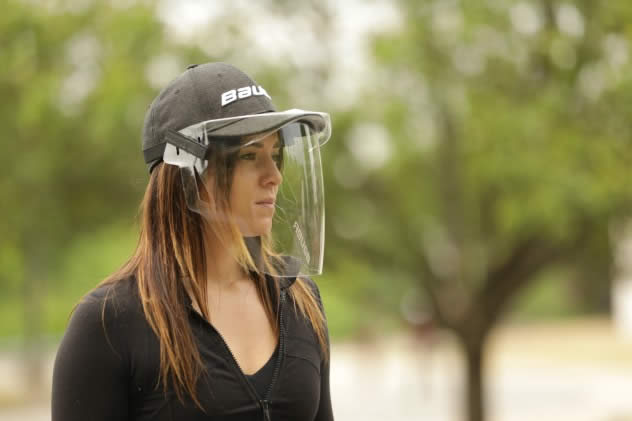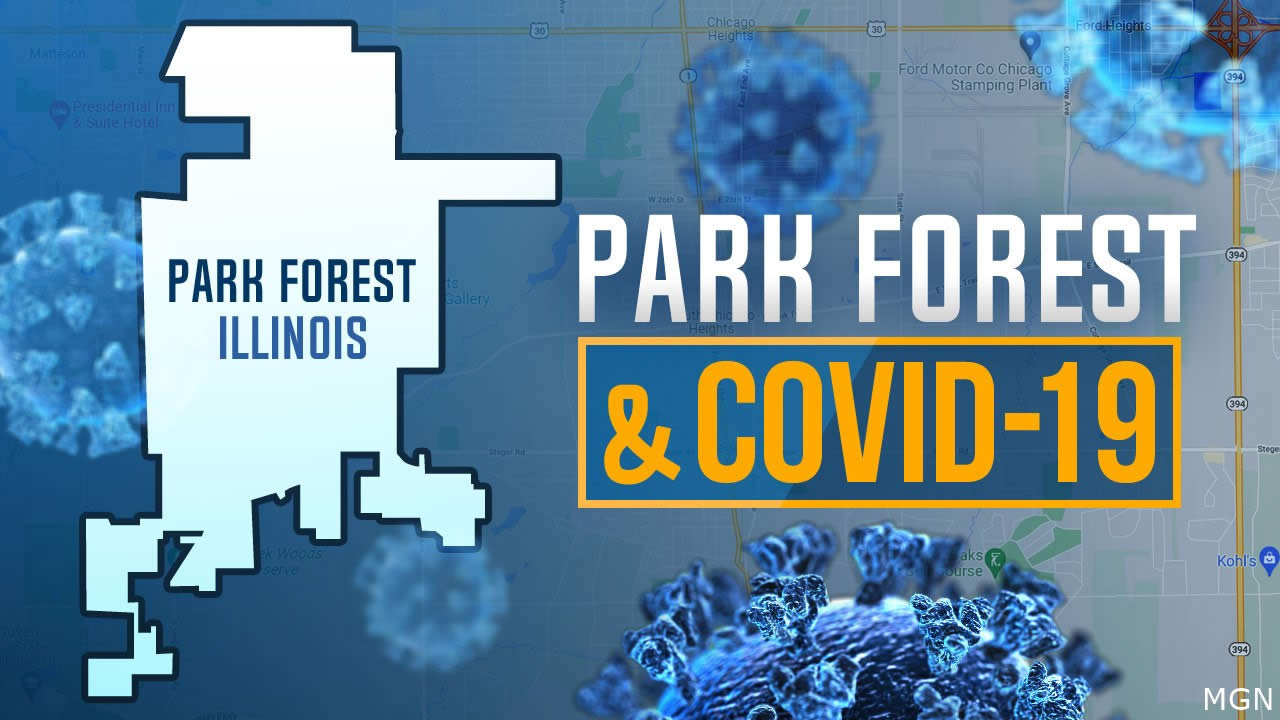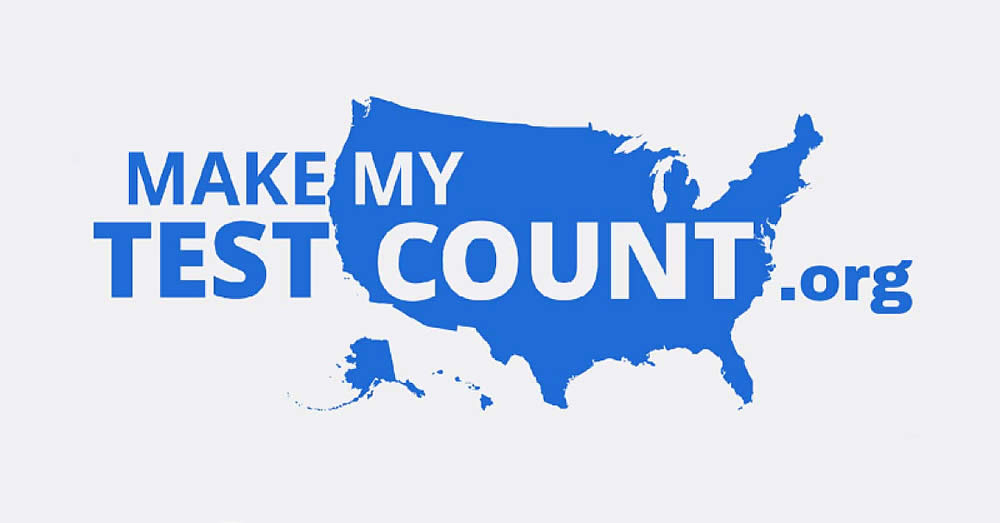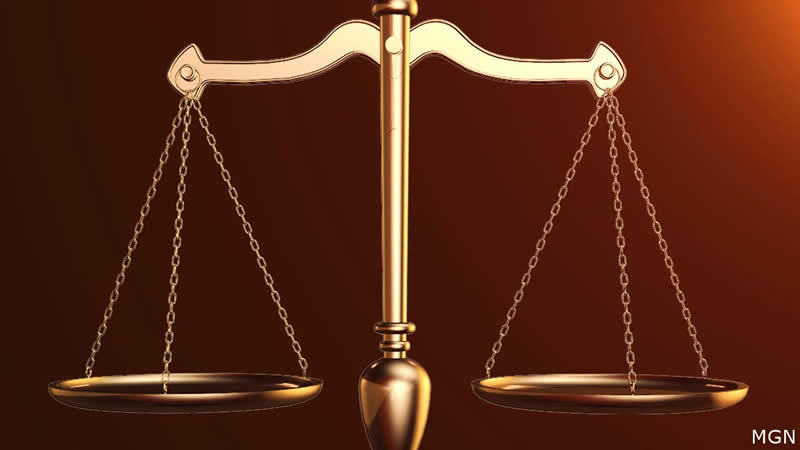
By Staff, AccuWeather
AccuWeather-(ENEWSPF)- The coronavirus pandemic altered life as humans knew it in 2020, and as much of the world starts to examine how and when to resume daily activities, it’s clear that there are many challenges to overcome before normal daily life can resume in full.
The outbreak, which originated in late 2019 in Wuhan, China, officially became a pandemic in March. SARS-CoV-2, the virus that causes the disease COVID-19, has infected millions worldwide and killed hundreds of thousands, but more than 3 million have recovered from the ferocious disease. Health experts are conducting a frantic race to develop a vaccine while also performing vital research into the behavior of the virus, what factors may inhibit its spread and other possible symptoms it may cause.
The contagion triggered much of the world to shelter indoors and practice social distancing. Severe damage has been done to the global economy, which has caused experts to issue bleak economic predictions that harken back to the days of the Great Depression. With much of life on pause over the past several months, government officials around the world are facing the difficult choice of reopening economies while the threat of a second wave lingers for later in 2020.
Here are the latest updates, listed in eastern time, and the most important things you need to know about coronavirus.
June 17, 2:16 p.m.
Bauer Hockey, one of the leading manufacturers of hockey equipment worldwide, announced a new line of products to ensure safety of hockey players in the age of COVID-19 on and off the ice. This summer, the company says it will “launch facial protection specifically designed for players, coaches, administrators, on-ice officials, parents and fans. The company had pivoted from sports equipment production to helping produce medical-grade face shields to help address a shortage that medical professionals faced in the early stages of the pandemic.
The company’s new products include an integrated cap shield, that attaches to the brim of a baseball hat or can be worn separately, a reversible fabric mask that can be worn in combination with the cap shield, and a splash guard. The splash guard in particular will provide extra protection to players on the ice. “This new product is designed to enhance coverage around the mouth and maintain a high level of vision and breathability,” Bauer says. Check out a picture of the cap shield above.
June 17, 1:57 p.m.
New York Gov. Andrew Cuomo announced “really good news on testing” as results show that there is a decrease in the number of new COVID-19 cases in the state. Cuomo said on Twitter that out of the 59,341 people who were tested on Tuesday, only 567 tests came back positive. This brings the positivity rate to 0.96%, which Cuomo says is a “record low.” The governor also said that New York City is on track to enter the second phase of the state’s reopening plan on Monday. During phase 2, restaurants and bars in the city will be allowed to open for outdoor dining, ABC 7 reported.
June 17, 1:28 p.m.
A group of friends tested positive for the coronavirus after a night out at a bar in Jacksonville Beach, Florida. Erika Crisp, a 40-year-old health care worker from Jacksonville, believes she contracted the virus on June 6 after attending a gathering with friends at Lynch’s Irish Pub. Like her, 15 of Crisp’s friends who were also at the bar tested positive for COVID-19. Prior to bar outing, Crisp said that she and her friends had been social distancing and following stay-at-home orders. “And then the first night we go out, Murphy’s Law, I guess,” Crisp told News4JAX. “The only thing we have in common is that one night at that one bar.” Crisp hopes that her mistake can help others understand the serious consequences of not following the recommended safety measures. “We should be wearing masks,” Crisp said. “We should be social distancing. It was too soon to open everything back up.” Watch the video below to hear from Crisp as well as the general manager of Lynch’s Irish Pub, Keith Doherty, who had to close the bar for cleaning.
June 17, 1:10 p.m.
Flushing a toilet can spew coronavirus particles into the air, a new study suggests. Researchers used computers to simulate the dynamics of flushing a toilet in order to examine how that process can sling virus aerosols, and their findings were published in the journal Physics of Fluids on Tuesday. “The simulation results are alarming in that massive upward transport of virus particles is observed, with 40%–60% of particles reaching above the toilet seat, leading to large-scale virus spread,” the authors of the study wrote in the abstract. Not only could flushing a toilet transport respiratory droplets upward, but the scientists said that SARS-CoV-2, the pathogen that causes COVID-19, can also be spread through fecal-oral transmission. Experts recommend taking the following precautionary steps to reduce the risk of virus spread in bathrooms:
- Keep toilet seat down when flushing
- Frequently clean toilet seats and bathroom surfaces
- Thoroughly wash your hands when using a toilet
Even though not all scientists agree that there is clear evidence for fecal-oral transmission of the contagion that causes COVID-19, the study’s recommendations resonated with other aerosol experts. “The viral load in fecal matter and the fraction of resulting aerosol containing the virus is unknown. Even if the virus were contained in the produced aerosols, it is unknown whether the virus would still be infectious; there is not yet clear evidence for fecal-oral transmission,” Bryan Bzdek, an aerosol researcher at Britain’s University of Bristol, told CNN. “While this study is unable to demonstrate that these measures will reduce transmission of the SARS-CoV-2 virus, many other viruses are transmitted though the fecal-oral route, so these are good hygiene practices to have anyway.”
June 17, 12:33 p.m.
Fauci sounds off on MLB season, the potential for a second lockdown and controversial Trump rally. Major League Baseball players and the team owners are at a standoff over whether to start the 2020 baseball season. If the two sides ever agree to begin playing games, Anthony Fauci, the director of the NIAID, suggested they should make it a quick season. “I would try to keep it in the core summer months and end it not with the way we play the World Series, until the end of October when it’s cold,” Fauci told The Los Angeles Times. “I would avoid that.”
In a separate interview with The Daily Beast on Tuesday, Fauci weighed in on whether a second nationwide lockdown is in order. He said it’s premature to discuss that option. “I don’t like to talk about a second wave right now, because we haven’t gotten out of our first wave,” he said in the interview. He also reminded readers that he believes a second wave in the U.S. is not inevitable. Fauci was also asked whether he would attend a rally President Donald Trump is planning to hold this weekend in Tulsa, Oklahoma. Health officials have expressed concern that the indoor event could be “the perfect storm” and turn into a super spreader occasion. “I’m in a high-risk category,” Fauci responded. “Personally, I would not. Of course not.” He also added that an outside rally would be “better than inside, no crowd is better than [a] crowd” and “[a] crowd is better than [a] big crowd.”
June 17, 11:53 a.m.
With Florida experiencing an uptick in new coronavirus infections, as many as five newly reported cases have been linked to a National Oceanic and Atmospheric Administration (NOAA) hurricane hunter base in the city of Lakeland, located about 40 minutes east of Tampa. According to the Orlando Sentinel, the five individuals work at the NOAA Aircraft Operations Center (AOC) located within the Lakeland Linder International Airport. The site is regularly used to deploy aircraft to investigate developing tropical systems. The Sentinel reported that as many as 68 employees were tested overall and the five infected employees were said to be in the facility most recently between June 3-8.
June 17, 11:30 a.m.
The Orlando International Airport becomes a coronavirus hotspot after hundreds of workers test positive for the virus. The development was announced by Florida Gov. Ron DeSantis after 500 employees at the airport were recently tested. “An airport in Central Florida had a couple of cases, they did the contract tracing. They looked at almost 500 workers and 260 people working close together were positive, 52 percent positivity rate on that one,” DeSantis said, according to ClickOrlando. On Tuesday, more than 2,780 new cases of COVID-19 were reported, bringing the total number of cases in the state to more than 80,100. The Florida Department of Health reports that roughly 5.5 percent of people who have taken the test in the state have tested positive for the virus. DeSantis says that as of June, 30,000 COVID-19 test results are being reported on a daily basis, and the percentage of positivity has gone up since May 17.
June 17, 11:14 a.m.
A pair of women from Britain managed to bring COVID-19 into New Zealand, less than a week after New Zealand officials celebrated being entirely free of the virus. The country has performed rigorous testing on all travelers and has only allowed New Zealanders, their families and essential workers to enter the country. The country previously had lifted all restrictions on daily life outside of the tight border controls. The infected women reportedly came in close contact with 320 other people while they were in New Zealand, all of whom are now being urged to get tested.
June 17, 10:18 a.m.
China enforces new restrictions amid new coronavirus outbreak in Beijing. Due to the sharp increase in cases in the Chinese capital, 1,255 flights to and from Beijing were canceled on Wednesday as the country raised its emergency warning to its second-highest level. This is a setback for the country, as the number of new cases had been in a constant decline since March. “This has truly rung an alarm bell for us,” Party Secretary Cai Qi said in a meeting of Beijing’s Communist Party Standing Committee, according to The Associated Press. Although it was believed that the source of the outbreak had to do with salmon sent from Norway, this theory has since been proven to be incorrect. “We can clear away uncertainty,” Norwegian politician Odd Emil Ingebrigsten said in a video conference, Reuters reported. According to Ingebrigsten, Chinese and Norwegian officials concluded that the source of the outbreak did not originate from in fish from Norway.
June 17, 9:35 a.m.
One of Europe’s iconic monuments is set to reopen next week. According to The Associated Press, the Eiffel Tower will reopen on June 25, following the longest closure for the landmark since World War II. Only limited numbers of people will be allowed to visit the Eiffel Tower with only the first and second floors expected to be accessible for the public, The AP reported. Visitors over 11 years old will be required to wear a mask, according to the report. The tower’s director said in an interview with the AP that he is hoping full access will be allowed by August.
June 17, 8:49 a.m.
President of Honduras the latest world leader to test positive for COVID-19. Juan Orlando Hernández, the president of Honduras, made a television appearance late Tuesday to inform citizens that he has tested positive for the coronavirus. Hernández said he began experiencing symptoms over the weekend, and the test results came back positive on Tuesday. He added that his wife, Ana García, also tested positive, though she was asymptomatic, and two aides also are infected, according to The New York Times. Hernández joins U.K. Prime Minister Boris Johnson who came down with COVID-19 in March and recovered after a stint in intensive care, and Russian Prime Minister Mikhail Mishustin as notable world leaders who have had bouts with the illness. Hernández said he’s feeling well enough to work and will do so from home. He also urged citizens of Honduras, which has reported close to 10,000 cases and more than 300 fatalities, to be vigilant about social distancing. “I feel enough strength and energy to continue forward and beat this pandemic,” Hernández said. “We are going to get ahead of this. I trust in God, Honduran doctors and medicine.”
June 17, 6:54 a.m.
Here are the latest global COVID-19 numbers, provided by Johns Hopkins University researchers:
- Total confirmed cases: 8,191,391
- Total deaths: 444,111
- Total recoveries: 3,971,560
June 16, 10 p.m.
Nevada will have to wait longer before transitioning from Phase 2 to Phase 3 of reopening the state. “Nevadans have made enormous sacrifices to get us to where we are today,” Gov. Steve Sisolak said during a press conference on Monday. “I don’t want to let that all go for naught by us having to take a giant step backwards.” The state has recorded an upward trend in daily COVID-19 cases over the past three weeks, according to ABC News. As of Tuesday afternoon, Nevada had reported over 11,600 confirmed cases of COVID-19 resulting in 467 deaths. “Now is not the time to abandon these protective measures. It is the time to double down on them. We can only stay open if we stay safe,” Sisolak said.
June 16, 9:14 p.m.
Two weeks after thousands protested in Philadelphia, the health department said the city hasn’t seen a spike in coronavirus cases. However, there was an increase in the number of people getting tested recently, the health department reported. “The Philadelphia Department of Public Health has not seen an increase in the number of COVID-19 coronavirus cases due to recent protests thus far.We have, however, seen an increase in the number of people getting tested, which the Health Department encourages for everyone who may have been exposed to COVID, including at a protest, to get tested. (Health Commissioner) Dr. (Thomas) Farley reported that fewer than 6% of the tests completed recently came back as positive, which is the lowest we’ve seen,” a health department spokesperson statement said, according to CNN.
June 16, 8:08 p.m.
The U.S. borders with Canada and Mexico will remain closed to non-essential travel until at least July 21. “I can now confirm that Canada and the United States have once again, agreed to extend by 30 days until July 21 the current measures in place along our border,” Canada Prime Minister Justin Trudeau announced on Tuesday. Mexico also said that the country’s northern border would remain closed through the same date, AFP reported. The closures initially went into place on March 21 in the early stages of COVID-19 lockdowns across North America, and could potentially be extended longer depending on the situation across the three countries come mid-July.
June 16, 6:58 p.m.
Hilton announced the company will cut 2,100 corporate employees as they deal with “unprecedented challenges for the travel and tourism industry.” Lockdown orders have caused the hotel industry to take a massive hit during the pandemic. Only 21.6% of hotel rooms in the U.S. were occupied between March 29 and April 4, data from hospitality analytics company STR showed. However, the data also revealed occupancy levels have improved since. Even with the good news, Hilton will also extend previously announced furloughs, reduced hours and corporate pay cuts for up to an additional 90 days, according to CNN. “Never in Hilton’s 101-year history has our industry faced a global crisis that brings travel to a virtual standstill,” Hilton’s President and CEO Christopher Nassetta said in a statement. Nassetta said he’s devastated that in order to protect the business “we have been forced to take actions that directly impact our team members.”
June 16, 5:46 p.m.
Will this new hat become a fashion trend in the age of social distancing? Hakan Lidbo, an artist in Sweden, created what he calls his “corona hat.” The helmet-looking headwear has sensors and will sound an alarm whenever anything, or anyone, comes within 1.5 meters (5 feet) of the person wearing it, AFP said. This will help people maintain a safe distance from each other, adhering to social distancing guidelines. Watch the corona hat in action:
This is news from AccuWeather.








